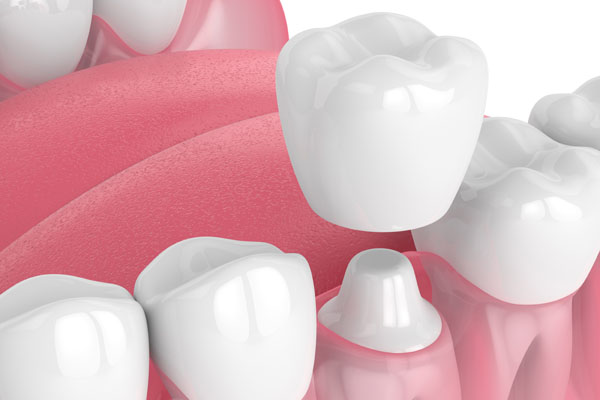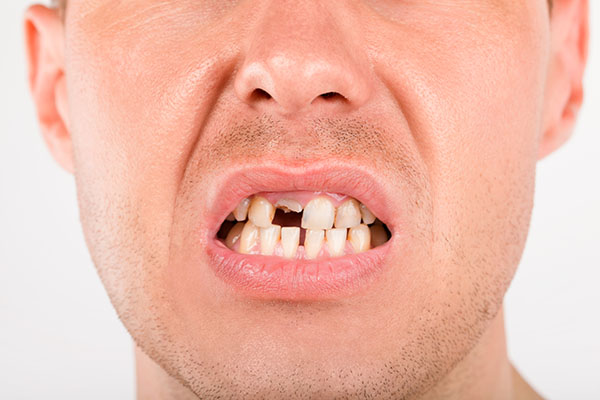When Do You Need a Dental Inlay?

If your dentist has just recommended getting a dental inlay, you would probably want to know about the procedure and why it is suggested. Dental inlays are indirect fillings only used on the molars, the set of teeth at the back of the mouth used for chewing. The tooth cusps mostly determine how this filling will be designed.
An overview of dental inlays
To understand the need for a dental inlay, one needs to get that a tooth cusp is. The cusps are the bumps on the outer edge of every tooth surrounding the grooves of the tooth. In this case, the tooth has developed decay or cavities in these grooves. The inlay fits completely within the tooth’s cusps to fill the cavity caused by tooth decay.
The inlay is a preformed filling, and unlike onlays, does not extend to the tooth cusps. The dentist will first numb the tooth with a local anesthetic before drilling the tooth clean out the decay. The inlay is a dental restoration option for repairing a tooth that has suffered damages or injury that do not extend to the tooth cusps.
After preparing the tooth, the dentist will take an impression and send it to the dental lab to produce a custom inlay. Inlays can be fabricated from composite resin or porcelain material and designed to match the color of the affected tooth. This means that the dental restoration will be indifferentiable on the tooth and fit over it perfectly. When the inlay is ready, the dentist will remove the temporary inlay on the tooth to fit the permanent inlay. Dental inlays are a more durable alternative to regular fillings produced from composite or amalgam.
The need for the dental inlay
Patients need to care for the teeth to prevent damages and decay. However, if the damage occurs, the dentist will suggest getting a dental inlay over a regular filling or a dental crown if the damage to the tooth’s biting surface fits the following conditions:
- class = "bullet-list"
- Extensive damage that might require a large dental filling, which might not be strong enough to support the tooth’s structure
- Fracture, breakage, or decay that does not affect the tooth’s cusps
- The severity of the damage does not require removal of enough tooth structure to justify the placement of a dental crown
Although inlays, onlays, fillings, and crowns are all effective smile restoration options, the dentist will perform an evaluation and recommend the most suitable option to repair the tooth. The dentist will suggest an inlay to restore the tooth’s shape and function. The dentist will review the patient’s dental records, medical history, current medications, and preferences before making their recommendation. Sometimes, a patient might need to get antibiotics before undergoing the procedure.
In conclusion
With dental inlay, only a small amount of the tooth structure is removed to complete the tooth restoration process, making it more conservative than onlays and dental crowns. If you have a damaged or decayed tooth, you need to promptly visit the dental office to have it checked and repaired. Book a consultation appointment to get started.
Request an appointment here: https://metrosmiles.com or call Metro Smiles Dental at (718) 841-9591 for an appointment in our Forest Hills office.
Check out what others are saying about our dental services on Yelp: Dental Restorations in Forest Hills, NY.
Recent Posts
Crowns are commonly used in dental restorations. A crown is a cap shaped like a tooth but hollow in the middle. It fits over a natural tooth that has to be prepared first. Depending on the issue it is correcting, a crown can be used by itself or as a component of another restoration technique.Teeth…
Dental restorations are used to repair or strengthen damaged teeth and to replace missing teeth. The damage may be the result of routine decay, extensive decay, fractures, weak gums, and many other dental issues. Dentists recommend restorations based on the tooth, its location, the source of trouble, the health of surrounding teeth, tooth color, patient…
Dental restorations help individuals regain oral functions like chewing and achieve better smiles. Although dentists' skills and experience are necessary to achieve favorable results, material choices contribute significantly to patient satisfaction.Dentists consider the location of teeth in the mouth and patients' input when selecting materials for dental restorations.Dentists aim to restore the function and appearance…
A patient who is missing a single tooth may wonder if dental restorations are worthwhile. There are several reasons that a missing tooth should not be left as an empty space. Here are a few potential issues that can arise from having a missing tooth and why restorations should be seen as required rather than…


